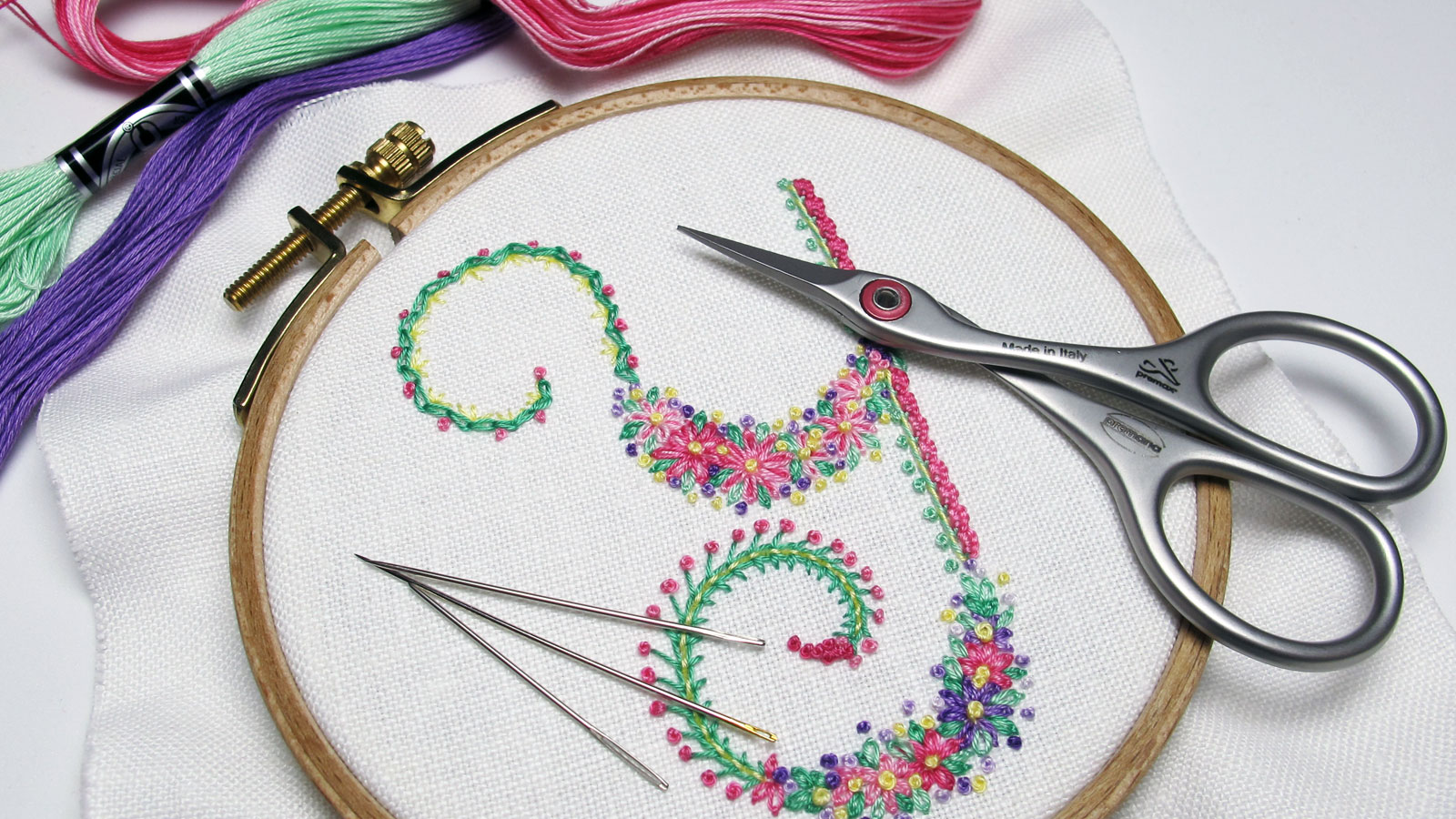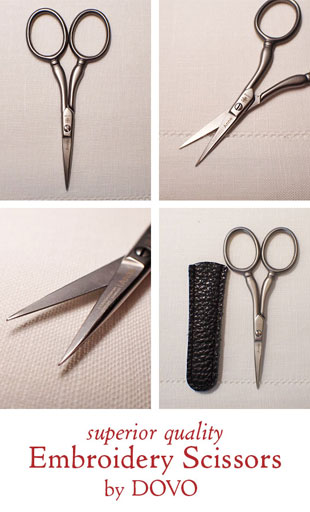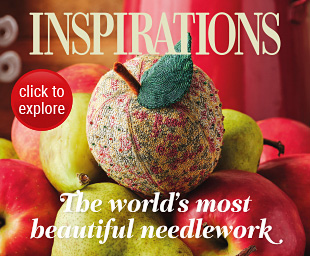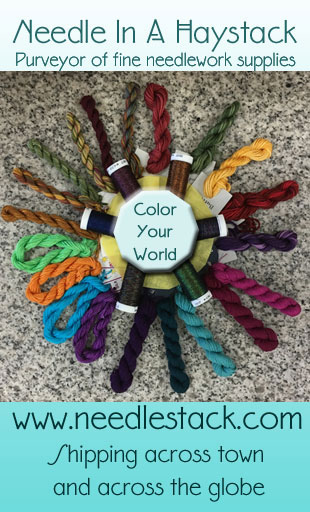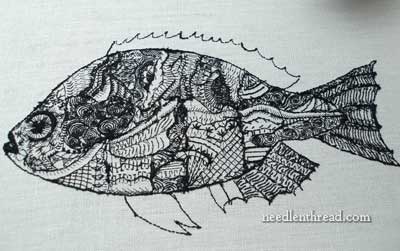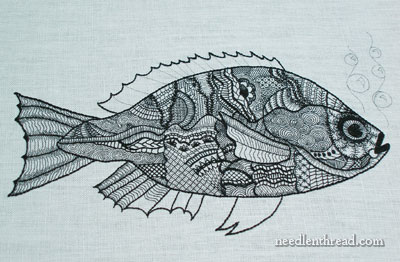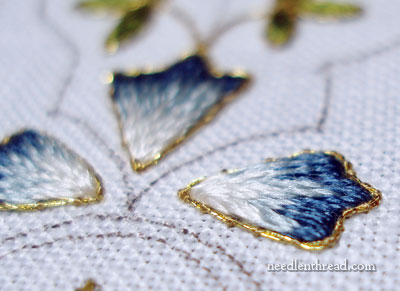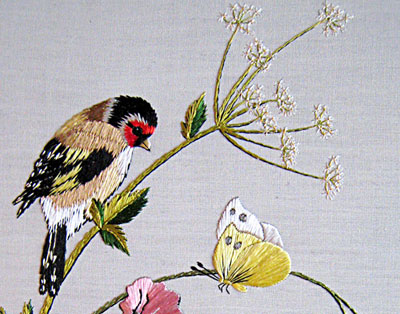May 28, 2010
Picking Out My Stitching is Good
Most embroiderers will agree that when we’re not satisfied with our stitching, we’re prone to react certain ways towards our projects. Me? I go two ways, depending on my frame of mind: 1. If I’m feeling determined and curious about the project, I’ll correct the problem right away, no matter how much time or trouble is involved; or 2. If I’m not wholly “into” the project and I’m already looking ahead to the greener pastures of another project, I’ll usually turf it, or at least relegate the project to a shelf – maybe to resurrect later, maybe not.

The Floral Glove project is one that I’m rather ferociously determined about, so the idea of doing a little picking didn’t bother me at all. In fact, in such circumstances, picking out stitches is always a good thing!
Although the project is not meant to be symmetrical, I could not find happiness in the look of this flower, which, as you can see, is somewhat sloppily stitched. You can see little bits of white between the layers, for example. I knew there would be some gold in there, but still – I just wasn’t satisfied with the look of it! At the same time, as I approached adding the gold Elizabethan twist around each layer of the flower, my mind boggled at how I would add the gold around the outside layer without plunging on both sides of every outside petal. I really didn’t want to do that.
The only thing for it, then, was to pick out the flower and start over with it. Continue reading “Picking Out My Stitching is Good”



